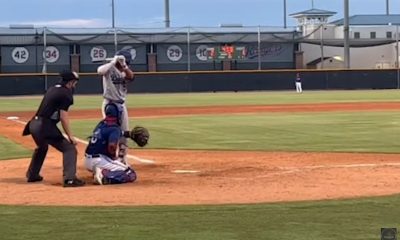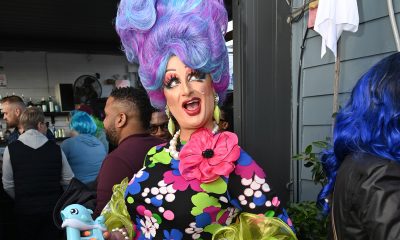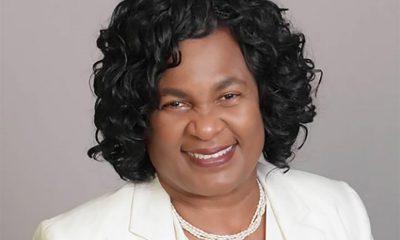Sports
Queer facts about Major League Baseball
America’s Favorite Pastime still lacks openly gay players
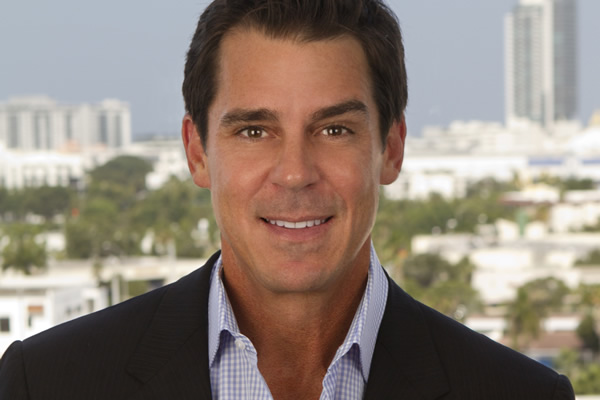
After a season-long hiatus from hosting in-the-stands fans at its 30 ballparks and stadiums due to the COVID-19 pandemic, Major League Baseball (and its Minor League Baseball feeder system) is back. The annual All-Star Game is set for July 13. Aside from gawking at your favorite players’ posteriors in form-fitting pinstriped pants, there are plenty of queer cheers to give for America’s national pastime. These are gayest things you didn’t know about pro ball.
Glenn Burke broke the first barrier – but it may have cost him
As an outfielder for the Los Angeles Dodgers from 1976 to ’78 (and widely regarded co-inventor of the high-five), Glenn Burke broke ground as the first active MLB player to come out as gay to his teammates and bosses. While he was asked to refrain from making his sexual orientation public by Dodgers’ top brass, Burke told People magazine in 1994 that his “mission as a gay ballplayer was to break a stereotype” and he thought it worked. In other interviews and in his autobiography, however, he suggested that prejudice drove him out of the sport, not the injury that sent him back down to the minors after a year with the Oakland Athletics.
The A’s released Burke from his contract before the end of his injured farm-team season, and he retired from the game in 1980.
In the initial years following his retirement, Burke competed in 100- and 200-meter sprints at the inaugural Gay Games in 1982 and in basketball at the 1986 Games, and for many years he played for the San Francisco Gay Softball League. Burke died of complications from AIDS in 1995.
Burke befriended Tommy Lasorda Jr. – and Tommy Senior wasn’t happy
Legendary Dodgers manager Tommy Lasorda Sr. – who led the team to two World Series championships, four National League pennants and eight division titles during his 20-year stewardship from 1976 to 1996 – had a gay son. Burke befriended the younger Lasorda Jr., which angered the “family values” manager, causing a rift that likely contributed to Burke being traded to the A’s after three seasons in Los Angeles. Lasorda Jr. died of AIDS complications in 1991 at age 33. Lasorda Sr. died earlier this year without ever having acknowledged he had a gay son.
It’s been 22 years since the second MLB player came out
Billy Bean, an outfielder for the Detroit Tigers, L.A. Dodgers and San Diego Padres from 1987 to 1995, came out in the Miami Herald in 1999, four years after retiring. Besides Burke, he remains the only other former MLB player to publicly acknowledge his homosexuality post-career; no active player has ever come out publicly and no former players have come out since. In 2003, Bean released his autobiography “Going the Other Way: Lessons from a Life in and out of Major League Baseball,” and in 2014 he was named MLB’s first Ambassador for Inclusion. In 2016, that role was expanded to Vice President of Social Responsibility and Inclusion, and today Bean serves as Vice President and Special Assistant to the Commissioner.
The L.A. Dodgers are the only team with both players who have come out as gay
Both Burke and Bean played for the Dodgers during their MLB careers – and as history tends to repeat itself, maybe there’s a gay player on the Dodgers’ roster right now. If that’s true, here’s hoping he has the courage to come out and make history while an active player, put the final nail in the coffin of the Dodgers’ homophobic past, and serve as an inspiration to aspiring young pro ball players everywhere.
No pressure.
Statistics suggest there are dozens of closeted pro baseball players
In a 2015 article for the New York Times, economist and public policy scholar Justin Wolfers wrote that based on the proportion of American men who have acknowledged being gay or bisexual (though not necessarily out), there must be closeted MLB players actively taking the field. Thirty MLB teams each have 40-men rosters equaling 1,200 players who don’t publicly identify as queer.
“If baseball players are as likely to be gay as other men their age – let’s go with an estimate of 1 in 25 – then the odds that none of these men are gay is one in two sextillion,” Wolfers wrote. “A sextillion comes after a trillion, quadrillion and quintillion; it is a thousand billion billion.”
Of course, there may be gay or bisexual men in MLB who have ripped a page from Burke’s playbook and only confided within their own club. Time will tell.
Lower-level pro ball has a much better coming-out average
Since Sean Conroy, former pitcher for the independent Sonoma Stompers, came out publicly in 2015 while still on the team’s roster – the first-ever active pro ball player to do so – a handful of others have followed in his pioneering footsteps (at various stages of their careers), including MiLB players David Denson, Tyler Dunnington, Jason Burch, and John Dillinger.
There are 30 MLB teams – and all but one of them host a Pride night
Twenty years ago this summer, the Chicago Cubs kicked off MLB’s Pride-night tradition with its now-annual “Out at Wrigley” celebration, and almost every club in the organization has followed suit. Twenty-eight teams in the United States and one in Canada host an evening of LGBTQ inclusiveness, usually with special ticket packages that include seats in a dedicated Pride section and rainbow-colored baseball swag. The lone holdout? The two-decades-too-late New York Yankees.
Two years ago, the Yanks acknowledged the 50th anniversary of the Stonewall Uprising and honored five first-annual Yankees-Stonewall Scholarship winners in a special pre-game commemoration ceremony that unveiled a plaque behind the center-field fence dedicated to the occasion. Yet still no Pride night.
The San Francisco Giants made rainbow history for Pride 2021
MLB teams are known to incorporate cause-based logos and patches into their uniforms throughout the season, like the pink breast cancer awareness ribbon, for instance, or camouflage to show military appreciation. But on June 5, 2021, the San Francisco Giants became the first team in big-league history to rainbow-ize its uniforms, including a right-sleeve home jersey patch in Pride colors and a matching logo on players’ hats, in celebration of its LGBTQ+ fans.
“We are extremely proud to stand with the LGBTQ+ community as we kick off one of the best annual celebrations in San Francisco by paying honor to the countless achievements and contributions of all those who identify as LGBTQ+ and are allies of the LGBTQ+ community,” San Francisco Giants CEO Larry Baer said in a statement.
A scripted series about gay professional ball players may be coming soon
Author Peter Lefcourt’s novel, “The Dreyfus Affair: A Love Story” (1992), about homophobia in baseball that follows two MLB players who get caught up in a sex scandal should be required reading for any on-the-spectrum queer sports fans, but if you’re adverse to cracking open a dusty book, the live-action TV adaptation may be coming to a streaming service near you.
Universal Television has optioned the novel for development with Oscar- and Emmy-winner David Frankel (“The Devil Wears Prada”) tapped to direct and co-write the pilot with Lefcourt.
The project has been in development in some form for the past 28 years. Studios put the kibosh on Lefcourt’s and Frankel’s original movie scripts in 1996 – Disney was even interested as one point – citing lack of commercial appeal.
These are the best butts in baseball according to Us magazine
There’s no definitive queer ranking of the best butts in baseball (and it’s a shame there isn’t) but a few years ago Us magazine asked its readers, majority females, to rank MLB’s greatest assets. Phillies left fielder Rhys Hoskins, Cincinnati Reds pitcher Matt Harvey, New York Yankee Giancarlo Stanton, Nationals right fielder Bryce Harper, and Dodger Cody Bellinger rounded out the top five – figuratively and literally.
Perfectly acceptable. But are there better booties at-bat?
Consider Diamondback David Peralta, Los Angeles Angel Mike Trout, and Orioles first baseman Chris Davis the next time they take the plate.
Seventh-inning stretch, anyone?
Mikey Rox is an award-winning journalist and LGBT lifestyle expert whose work has been published in more than 100 outlets across the world. He currently works for the Atlanta Braves. Connect with Mikey on Instagram @mikeyroxtravels
Sports
Bisexual former umpire sues Major League Baseball for sexual harassment
Brandon Cooper claims female colleague sexually harassed him
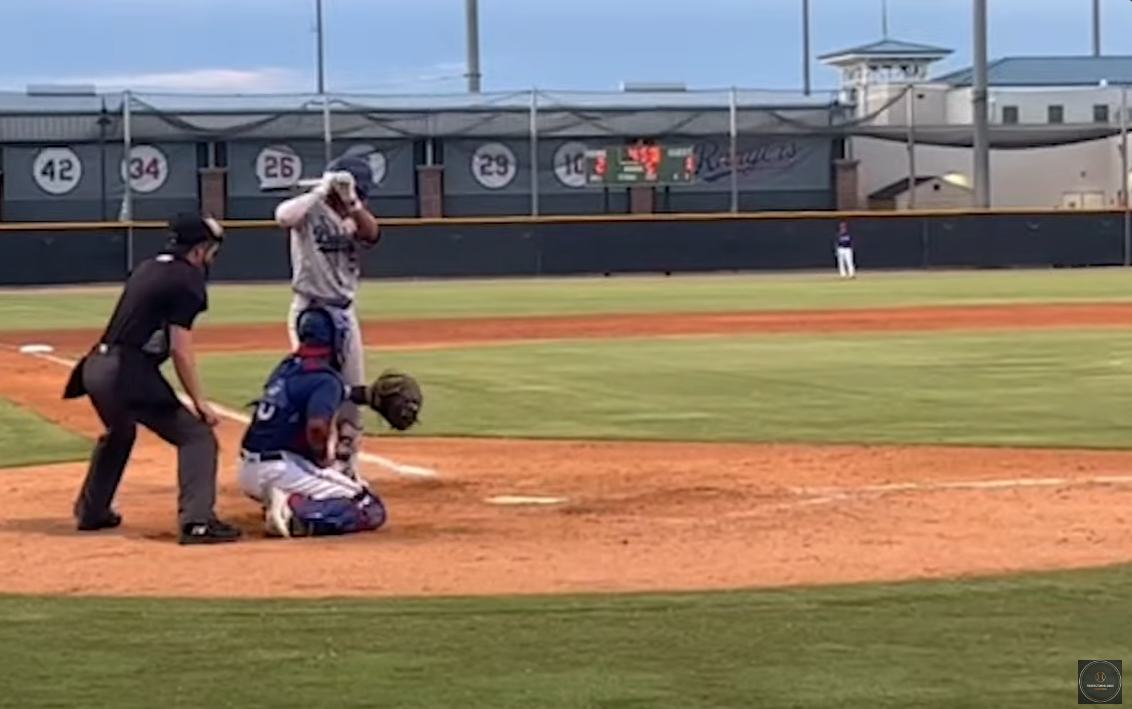
A fired former umpire is suing Major League Baseball, claiming he was sexually harassed by a female umpire and discriminated against because of his gender and his sexual orientation.
Brandon Cooper worked in the minor league Arizona Complex League last year, and according to the lawsuit he filed Wednesday in federal court in Manhattan, he identifies as bisexual.
“I wanted my umpiring and ability to speak for itself and not to be labeled as ‘Brandon Cooper the bisexual umpire,’” he told Outsports. “I didn’t want to be labeled as something. It has been a passion of mine to simply make it to the Major Leagues.”
But that didn’t happen. Instead of being promoted, he was fired. His suit names MLB and an affiliated entity, PDL Blue, Inc., and alleges he had endured a hostile work environment and wrongful termination and/or retaliation because of gender and sexual orientation under New York State and New York City law.
“Historically the MLB has had a homogenous roster of umpires working in both the minor and major leagues,” Cooper claims in his suit. “Specifically, to date there has never been a woman who has worked in a (regular) season game played in the majors, and most umpires are still Caucasian men. To try to fix its gender and racial diversity issue, defendants have implemented an illegal diversity quota requiring that women be promoted regardless of merit.”
Cooper claims former umpire Ed Rapuano, now an umpire evaluator, and Darren Spagnardi, an umpire development supervisor, told him in January 2023 that MLB had a hiring quota, requiring that at least two women be among 10 new hires.
According to the suit, Cooper was assigned to spring training last year and was notified by the senior manager of umpire administration, Dusty Dellinger, that even though he received a high rating in June from former big league umpire Jim Reynolds, now an umpire supervisor, that women and minority candidates had to be hired first.
Cooper claims that upon learning Cooper was bisexual, fellow umpire Gina Quartararo insulted him and fellow umpire Kevin Bruno by using homophobic slurs and crude remarks. At that time, Quartararo and Cooper worked on the same umpiring crew and being evaluated for possible promotion to the big leagues.
This season, Quartararo is working as an umpire in the Florida State League, one of nine women who are working as minor league umpires.
Cooper said he notified Dellinger, but instead of taking action against Quartararo, he said MLB ordered Cooper to undergo sensitivity training. According to his lawsuit, he was also accused of violating the minor league anti-discrimination and harassment policy.
Cooper’s suit says he met with MLB Senior Vice President of Diversity, Equity and Inclusion Billy Bean — who the Los Angeles Blade reported in December is battling cancer.
The lawsuit says at that meeting, Bean told the umpire that Quartararo claimed she was the victim, as the only female umpire in the ACL. Cooper said he told Bean Quartararo regularly used homophobic slurs and at one point physically shoved him. He also claims that he has video evidence, texts and emails to prove his claim.
But he said his complaints to Major League Baseball officials were ignored. His lawsuit said MLB passed him over for the playoffs and fired him in October. He said of the 26 umpires hired with Cooper, he was the only one let go.
Through a spokesperson, MLB declined to comment on pending litigation. Quartararo has also not publicly commented on the lawsuit.
Sports
Brittney Griner, wife expecting first child
WNBA star released from Russian gulag in December 2022
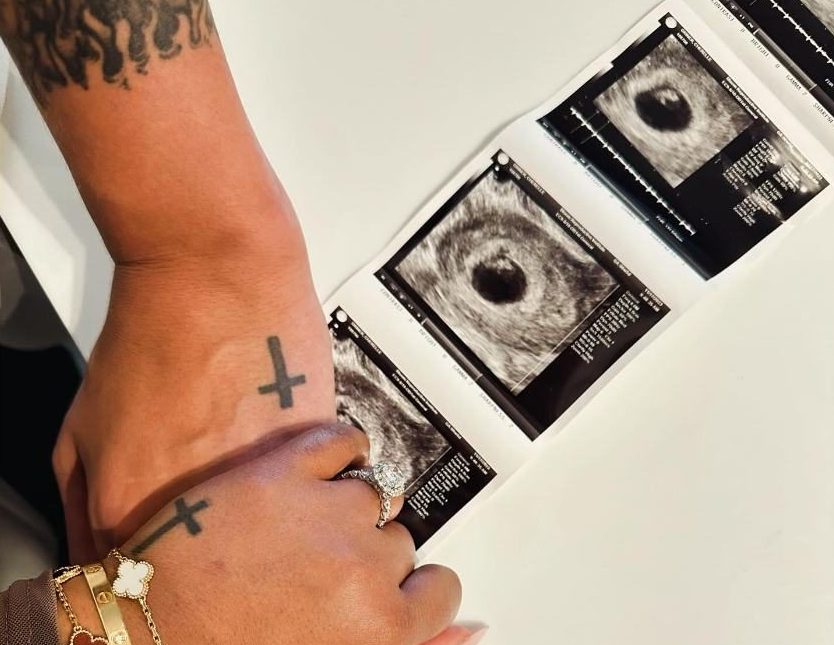
One year after returning to the WNBA after her release from a Russian gulag and declaring, “I’m never playing overseas again,” Phoenix Mercury star Brittney Griner and her wife announced they have something even bigger coming up this summer.
Cherelle, 31, and Brittney, 33, are expecting their first child in July. The couple shared the news with their 715,000 followers on Instagram.
“Can’t believe we’re less than three months away from meeting our favorite human being,” the caption read, with the hashtag, #BabyGrinerComingSoon and #July2024.
Griner returned to the U.S. in December 2022 in a prisoner swap, more than nine months after being arrested in Moscow for possession of vape cartridges containing prescription cannabis.
In April 2023, at her first news conference following her release, the two-time Olympic gold medalist made only one exception to her vow to never play overseas again: To return to the Summer Olympic Games, which will be played in Paris starting in July, the same month “Baby Griner” is due. “The only time I would want to would be to represent the USA,” she said last year.
Given that the unrestricted free agent is on the roster of both Team USA and her WNBA team, it’s not immediately clear where Griner will be when their first child arrives.
The Griners purchased their “forever home” in Phoenix just last year.
“Phoenix is home,” Griner said at the Mercury’s end-of-season media day, according to ESPN. “Me and my wife literally just got a place. This is it.”
As the Los Angeles Blade reported last December, Griner is working with Good Morning America anchor Robin Roberts — like Griner, a married lesbian — on an ESPN television documentary as well as a television series for ABC about her life story. Cherelle is executive producer of these projects.
Next month, Griner’s tell-all memoir of her Russian incarceration will be published by Penguin Random House. It’s titled “Coming Home” and the hardcover hits bookstores on May 7.
Sports
Applause and criticism for Staley’s trans-inclusive stance
South Carolina Gamecocks women’s coach made comments on Sunday
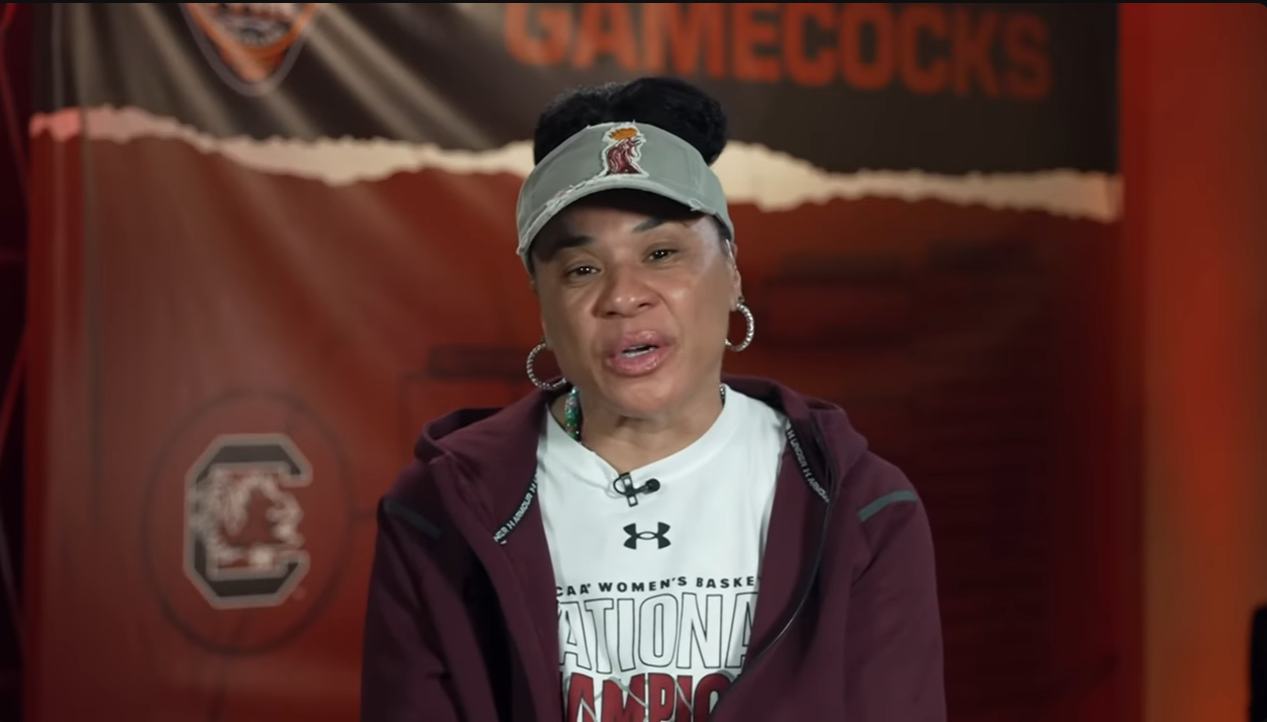
If not for a conservative transphobic blogger, this moment should be a celebration of NCAA women’s basketball coach Dawn Staley and the women of the South Carolina Gamecocks.
On Sunday, they concluded their undefeated season with a decisive win and a championship title. But when Staley faced reporters before that big game, Outkick’s Dan Zakheske asked her an irrelevant, clickbait question about transgender women in sports, referring to them as “biological males.”
Staley could have ignored the question, or stated she had no opinion, but instead the legendary coach offered a crystal clear endorsement of trans women competing in women’s sports, something outlawed in her home state of South Carolina for girls in kindergarten through college.
“I’m of the opinion,” said Staley, “If you’re a woman, you should play. If you consider yourself a woman and you want to play sports or vice versa, you should be able to play. That’s my opinion.”
Zakheske clearly wasn’t satisfied with that declaration of allyship and Staley swiftly cut him off.
“You want me to go deeper?” she asked.
“Do you think transgender women should be able to participate,” he started to say, when the coach stole the ball and took it downtown on a fastbreak. “That’s the question you want to ask? I’ll give you that. Yes. Yes. So, now the barnstormer people are going to flood my timeline and be a distraction to me on one of the biggest days of our game, and I’m okay with that. I really am.”
Staley is herself a Hall of Fame player a leading voice for diversity.
Reaction to her comments were swift, from LGBTQ rights organizations, athletes and inclusion opponents.
“Coach Staley simply spoke the truth that trans women are women and should play if they want,” said Sarah Kate Ellis, president and CEO of GLAAD, in a post on Instagram. “All of us can take a page from Coach Staley’s playbook as a sports leader and as a person of high integrity guided by faith, compassion and common sense.”
A White House pool reporter revealed President Joe Biden called Staley Sunday evening to congratulate her and the Gamecocks on their championship win. But it’s not clear if she and the president, an outspoken supporter of trans rights, discussed her remarks on trans athletes.
A number of Black leaders in the LGBTQ movement applauded Staley for taking a stand.
“Coach Staley has always been a trailblazer, but she’s also shown that true leadership is about advancing justice and equality for everyone,” said Human Rights Campaign President Kelley Robinson. “By expressing her full-throated support for transgender athletes’ inclusion in sports, she’s sending an important message — our shared humanity matters.
“Coach Staley showed courage and vulnerability, in choosing to answer the question and make a powerful statement of support for trans people on one of the biggest days and biggest stages in sports history,” said Kierra Johnson, executive director of the National LGBTQ Task Force, in a statement. “Not only does that make her a leader we can all aspire to like, it makes her a class act. She has etched her legacy in the history books with her play, her coaching, her heart and her smarts.”
In congratulating Staley on her championship title victory, Dr. David J. Johns, the CEO and executive director of the National Black Justice Coalition, also commended her for “her unwavering advocacy and support for transgender people in sports.”
“In a time when transgender athetes face unjust scrutiny, discrimination and exclusion from the National Association of Intercollegiate Athletics, her courage to speak truth to power and in support of inclusion and fairness sets a powerful example for us all, and is a testament to her integrity and compassion.”
The NBJC leader was referring to Monday’s announcement by the NAIA, the governing body of athletic programs at small colleges nationwide, voting 20-0 to essentially ban trans women from competing with other women beginning Aug. 1, as ESPN reported.
“It is a shocking and devastating development that the NAIA, an organization that has done so much to open doors, is now slamming those doors shut on transgender athletes,” said Sasha Buchert, Lambda Legal’s senior attorney and director of the organization’s nonbinary and trans rights project.
“Instead of standing up in support of transgender young people, the NAIA has simply turned its back on them — permanently depriving them of the benefits of competition. Would that they had the courage of victorious University of South Carolina women’s basketball coach Dawn Staley, who didn’t miss a beat in clarifying that transgender women should be able to play.”
However, praise for Staley’s stance was not universal.
Riley Gaines, failed former college swimmer and paid shill for the anti-inclusion organization, Independent Women’s Forum, called Staley “entirely incompetent or a sell-out” on Fox News. “Personally, I don’t think she believes what she said.”
Gaines has turned her fifth-place tie with out trans NCAA champion Lia Thomas into a career as a crusader against inclusion and a former advisor to the presidential campaign of Florida Gov. Ron DeSantis.
Val Whiting, a former Stanford University and professional women’s basketball player, tweeted her strong disagreement with Staley. “A lot of my basketball sisters feel differently but trans women do not belong in women’s sports. It’s not fair nor safe for biological women. There has to be another solution for trans women to be able to compete athletically besides having them compete against biological women.”
A lot of my basketball sisters feel differently but trans women do not belong in women’s sports. It’s not fair nor safe for biological women. There has to be another solution for trans women to be able to compete athletically besides having them compete against biological women.
— Val Whiting (@iamcoachval) April 7, 2024
Zaksheske’s Outkick colleague, anti-trans pundit David Hookstead, also went all-in with a transphobic post.
“Dawn Staley says she supports men who identify as women competing against real women in sports. Her view could literally destroy women’s basketball forever. Why won’t more people stand up for women?”
Dawn Staley says she supports men who identify as women competing against real women in sports.
— David Hookstead (@dhookstead) April 6, 2024
Her view could literally destroy women’s basketball forever.
Why won’t more people stand up for women? pic.twitter.com/2A59KTqvHb
Hookstead then boasted that Staley blocked his account.
Republican South Carolina Congresswoman Nancy Mace retweeted Zaksheske’s account of his interaction with Staley, calling her support of trans athletes “absolute lunacy.” That in turn won praise from Caitlyn Jenner, who retweeted Whiting and posted her thanks to Mace, along with this comment: “There is nothing complicated about this issue!”
What is complicated is that Jenner has never explained why she has competed with cisgender women in golf ever since her transition almost a decade ago.
You’re a hypocrite. pic.twitter.com/42DKwA9jmF
— Art Candee 🍿🥤 (@ArtCandee) April 7, 2024
-

 State Department4 days ago
State Department4 days agoState Department releases annual human rights report
-
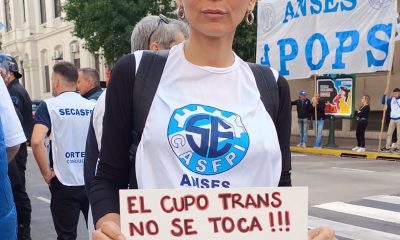
 South America2 days ago
South America2 days agoArgentina government dismisses transgender public sector employees
-
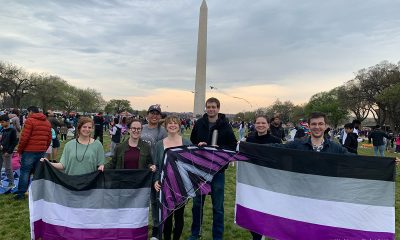
 District of Columbia2 days ago
District of Columbia2 days agoCatching up with the asexuals and aromantics of D.C.
-

 Politics5 days ago
Politics5 days agoSmithsonian staff concerned about future of LGBTQ programming amid GOP scrutiny

